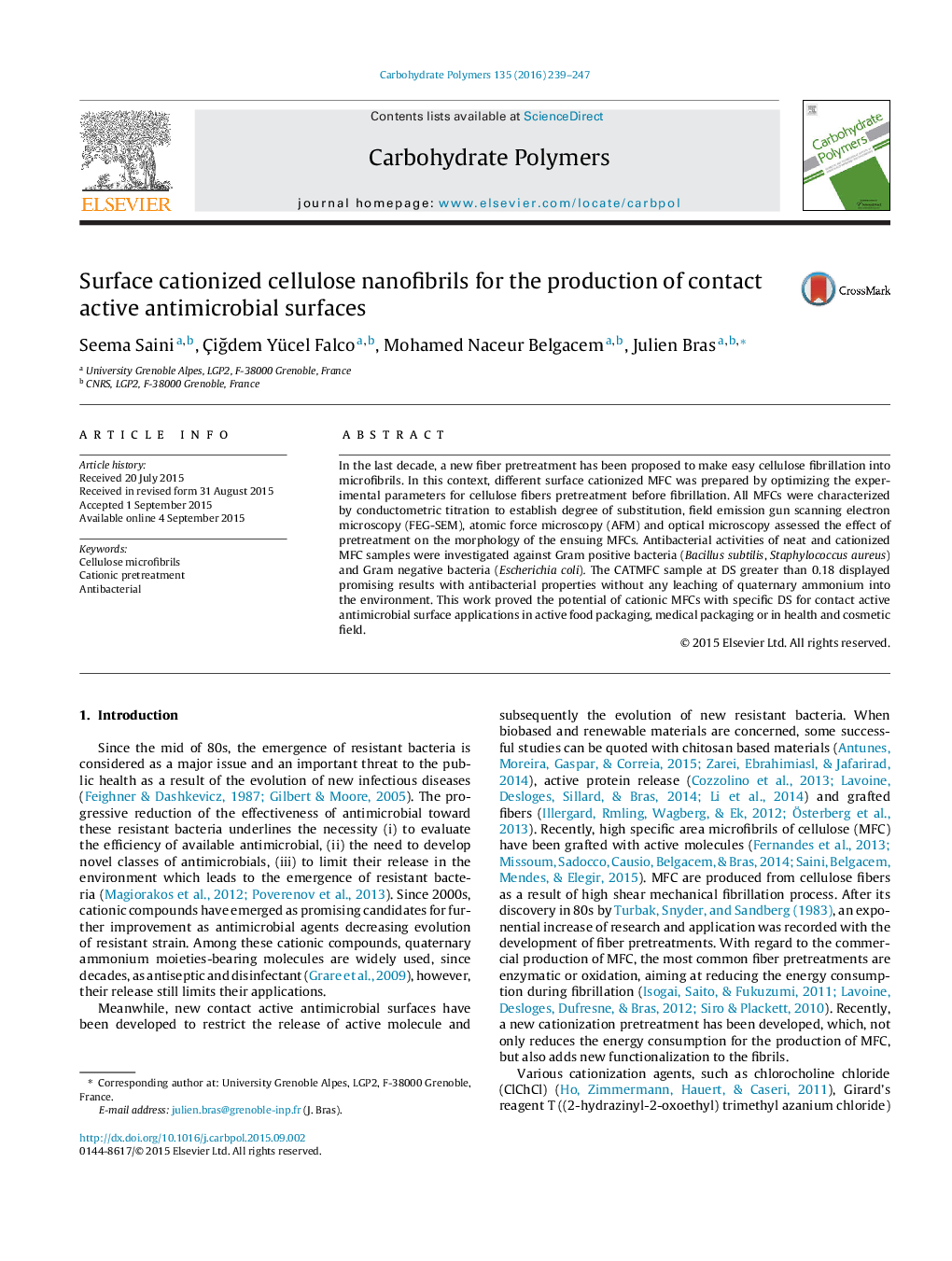| Article ID | Journal | Published Year | Pages | File Type |
|---|---|---|---|---|
| 1383567 | Carbohydrate Polymers | 2016 | 9 Pages |
•Cationization was employed as pretreatment before mechanical disintegration for fibrillation of nanofibers.•Optimization of experimental conditions for fiber pretreatment for high degree of substitution.•Molecule effectively immobilized on the surface of cellulose without any leaching ability.•Promising antibacterial results with Gram positive bacteria (Bacillus subtilis and Stayphylococcus aureus).•Production of contact active antimicrobial microfibrillated cellulose for large scale applications.
In the last decade, a new fiber pretreatment has been proposed to make easy cellulose fibrillation into microfibrils. In this context, different surface cationized MFC was prepared by optimizing the experimental parameters for cellulose fibers pretreatment before fibrillation. All MFCs were characterized by conductometric titration to establish degree of substitution, field emission gun scanning electron microscopy (FEG-SEM), atomic force microscopy (AFM) and optical microscopy assessed the effect of pretreatment on the morphology of the ensuing MFCs. Antibacterial activities of neat and cationized MFC samples were investigated against Gram positive bacteria (Bacillus subtilis, Staphylococcus aureus) and Gram negative bacteria (Escherichia coli). The CATMFC sample at DS greater than 0.18 displayed promising results with antibacterial properties without any leaching of quaternary ammonium into the environment. This work proved the potential of cationic MFCs with specific DS for contact active antimicrobial surface applications in active food packaging, medical packaging or in health and cosmetic field.
